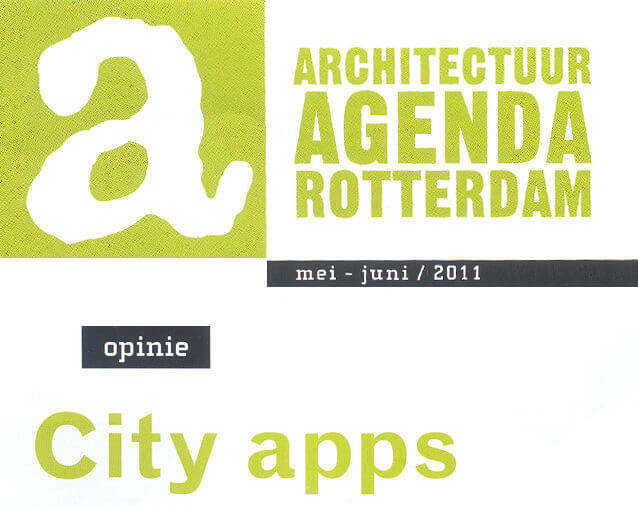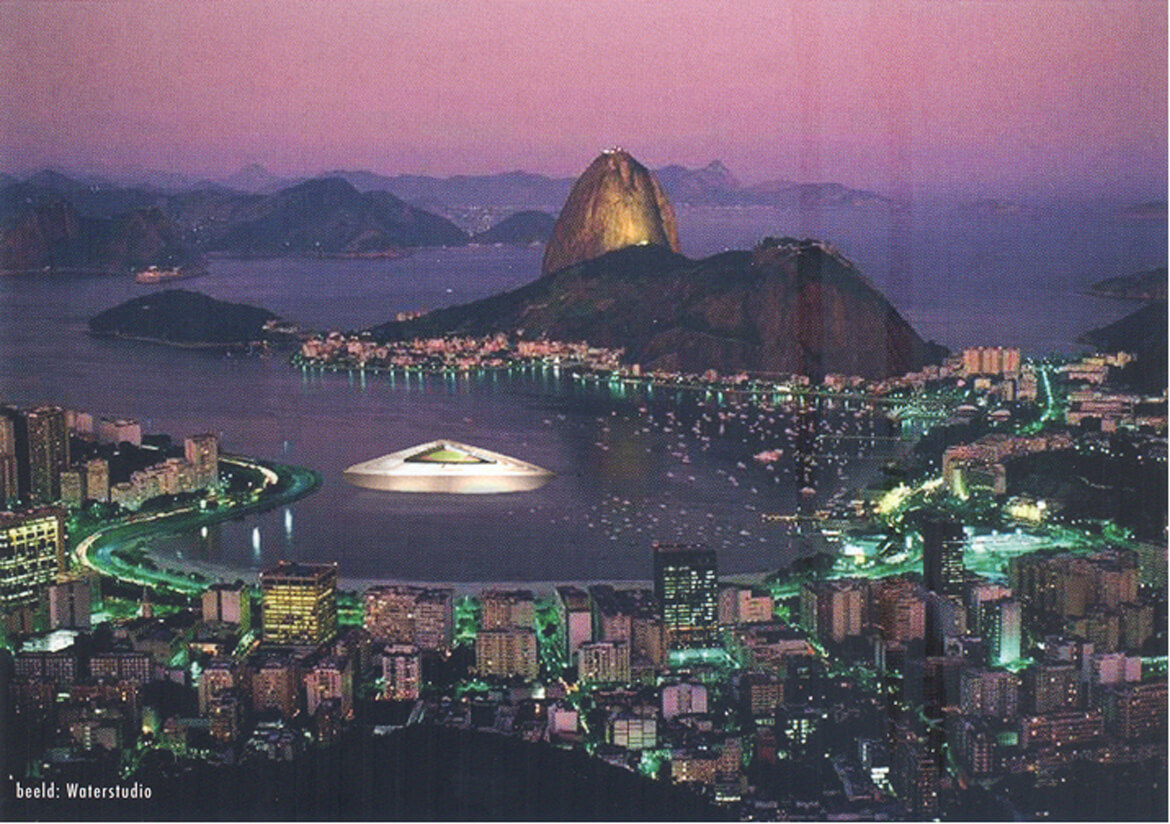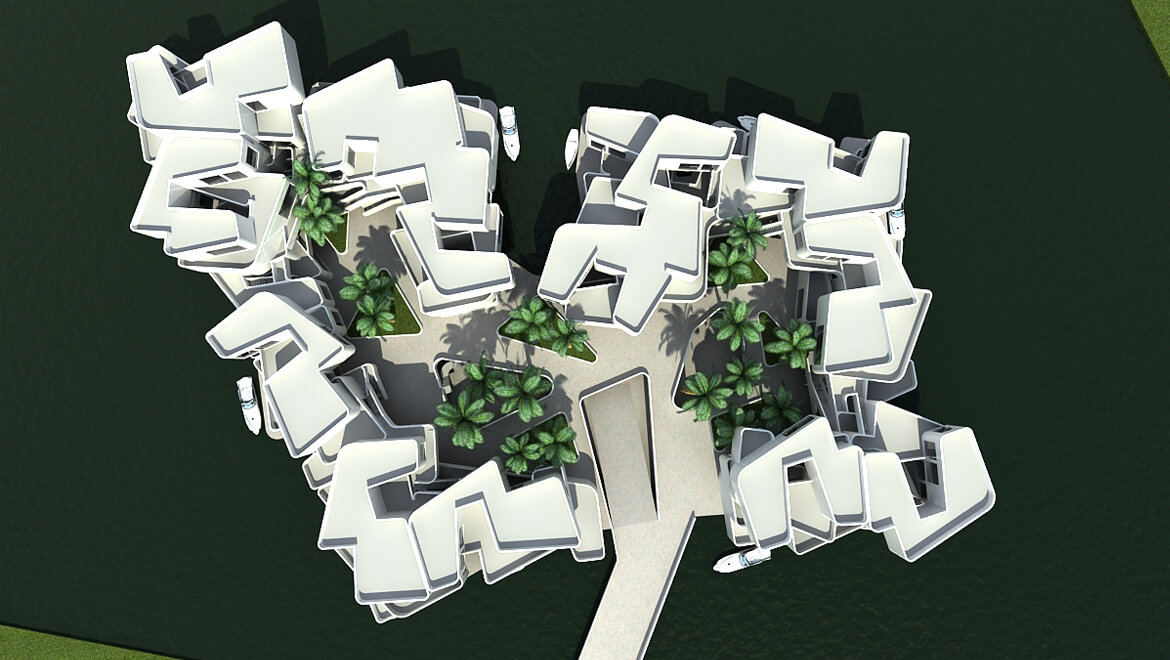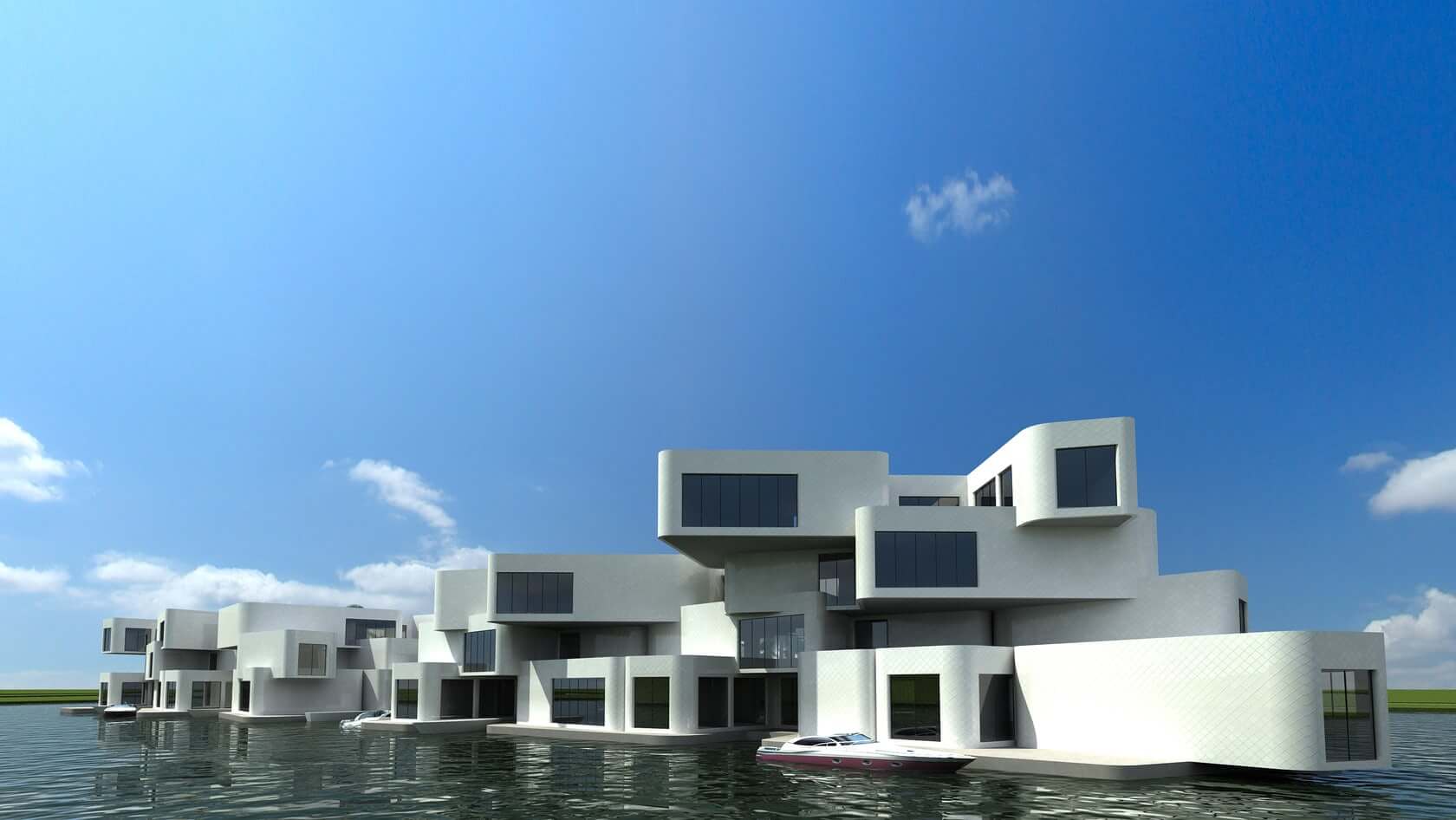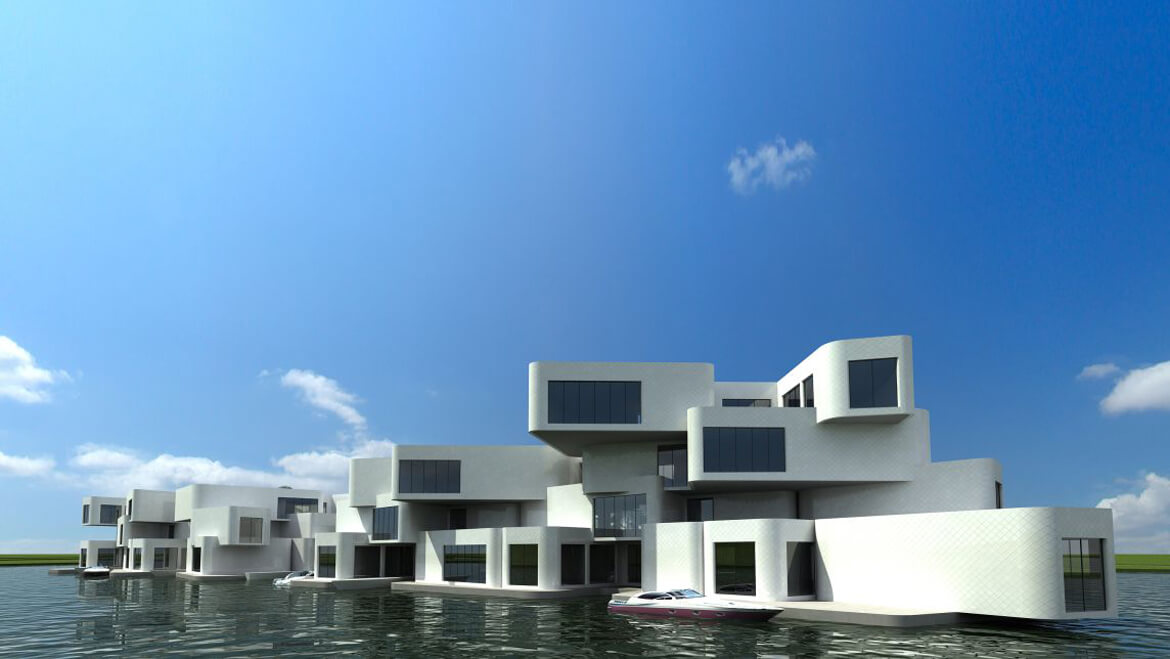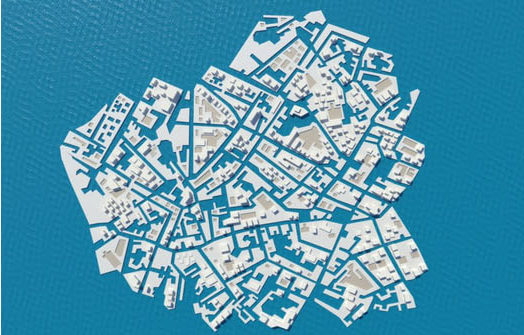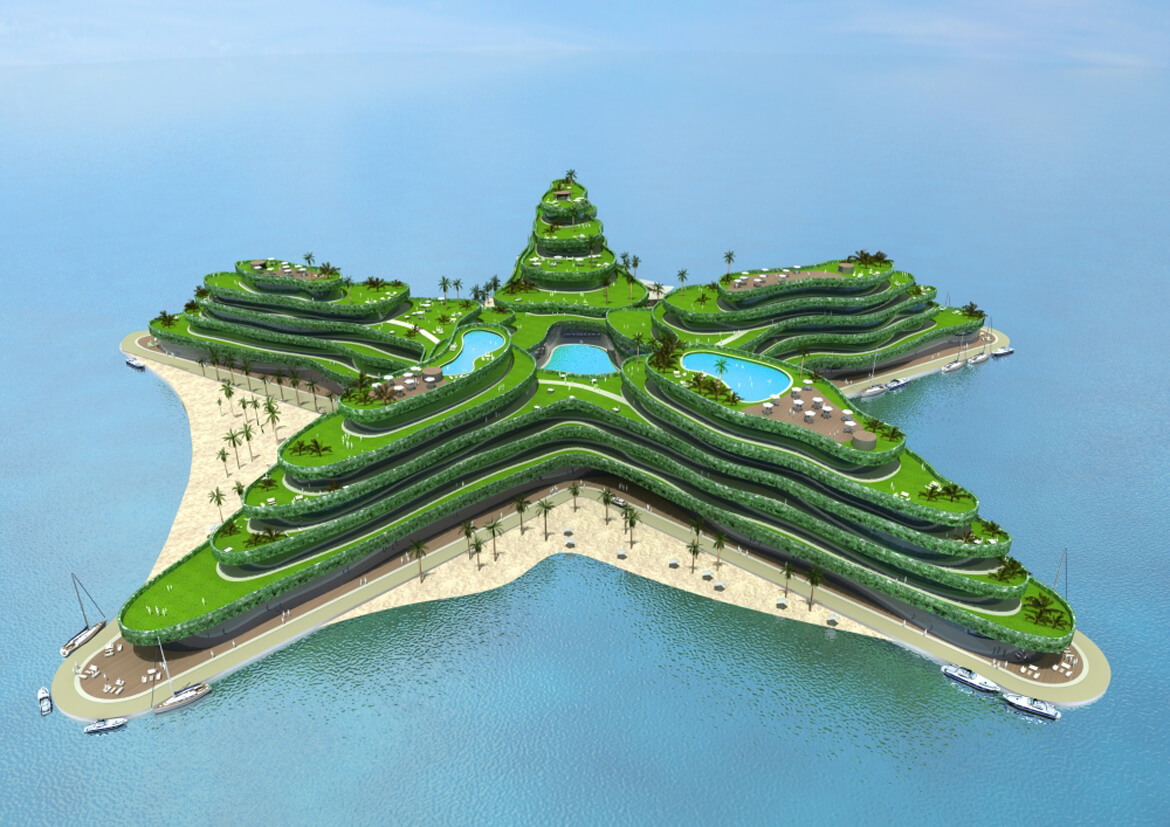Water hazard! $500 million floating golf course planned for Maldives
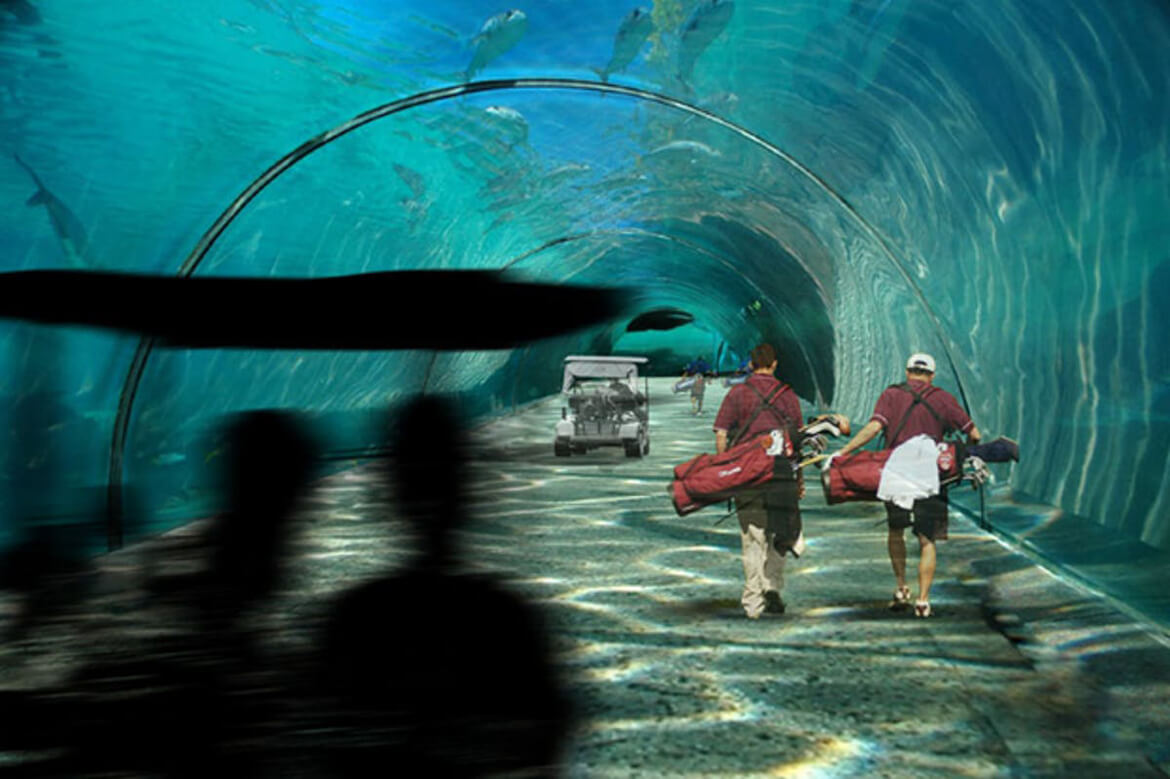
CNN, Will Tidey
You’ve just finished a round of golf on a floating course in the middle of the Indian Ocean. An underwater tunnel leads you to the clubhouse, where a glass elevator drops down to a main bar that doubles as a spectacular natural aquarium.
It might sound far-fetched, but a $500 million development in the Maldives is set to make the world’s biggest water hazard a reality — and at the same time offer a potential long-term solution to the threat of climate change in the area.
Designed by floating architecture specialists Dutch Docklands, the proposed site is just a five-minute speedboat ride from Maldives capital Male, and will offer 27 holes of golf, set upon three interlinked islands.
The government-approved development will also boast around 200 villas, 45 private islands and a conservation center — and all at little or no cost to the wildlife-rich coral reefs it will call home, according to the people behind it.
“We told the president of the Maldives we can transform you from climate refugees to climate innovators,” said Paul van de Camp, CEO of Dutch Docklands.
“And we have a way of building and sustaining this project that is environmentally friendly too. This is going to be an exclusively green development in a marine-protected area.”
With over 80 percent of their 1,190 coral reef islands no more than a meter above sea level, the Maldivian government is at the forefront of the battle against climate change.
As sea levels reach dangerous levels, one option is to build defense walls, as they have around Male. Another is to buy land from other countries and effectively move their population to other areas. The third is to live on floating landscapes.
“Climate change is upon us and the Maldives are feeling it most. That’s why they’re leading the way in trying to find a way to combat the problem.” said Mark Spalding, senior marine scientist at the Nature Conversancy.
“But building on floating islands clearly comes with a risk of pollution. Golf courses need pesticides and you need to deal with that properly to make sure it doesn’t get into the ocean. There’s also the issue of desalinating the water to irrigate the course. That has to be done cleanly too.”
Dutch Docklands appear to have a green solution. They plan to capture pesticides in concrete troughs, and recycle them in a fresh water “sweet lakes” in the middle of the golf course afterwards. That same water will then be used to irrigate the course.
When it comes to the environmental cost of constructing the islands and developments in the first place, the solution is far more straightforward.
“We’ll be building the islands somewhere else, probably in the Middle East or in India,” said designer Koen Olthuis, the man whose vision will be realized when work officially starts on the project later this year.
“That way there’s no environmental cost to the Maldives. When it comes to the golf course, the islands will be floated into position first, and then the grass will be seeded and the trees planted afterwards.”
Troon Golf, who will be lending their expertise to the project in designing the course itself, stressed the economic benefits that could result from the construction in a release issued from their headquarters in Zurich, Switzerland.
“The scar less development, which has zero footprint on the Maldives region will include state-of-the-art golf courses that look set to bring a wealth of new tourism and investment to the country,” said managing director Bruce Glasco.
But Spalding is not getting carried away. With some of the world’s most valuable coral reef real estate at stake, he plans to watch the development closely and treat all environmental claims with caution.
“I just hope the Maldives government have been wise enough to not just fall for rhetoric,” he said.
“In an ideal world a development like this would be on land, but the world is changing. I just hope they get it right. If they do, this type of development could be a harbinger of things to come.”
If things go to plan, Van de Camp expects the golf course to be ready for play by the end of 2013, will the full development set to launch in 2015. And he’s in no doubt visiting golfers will be in for a treat.
“This will be the first and only floating golf course in the world, and it comes with spectacular ocean views on every hole,” he said.
“And then there’s the clubhouse. You get in an elevator and go underwater to get to it. It’s like being Captain Nemo down there.”
ABC Radio Australia
By Design, Alan Saunders
Following the Queensland floods, By Design discussed how we can better design our cities to hold back the waters. In response, a listener wrote suggesting that the time had come to think about whether we could make our buildings float rather than worrying about flooding. It’s a question which captured our imagination and one that seems very pertinent as global warming sees water levels continue to rise in coastal residential areas.
Waterstudio.NL is a Netherlands architectural firm that specialises in floating structures to counter concerns about floods. The vision of its founder, Koen Olthuis, is to change cities worldwide by using water as a building ground.
Floating islands project will diversify Maldivian fame
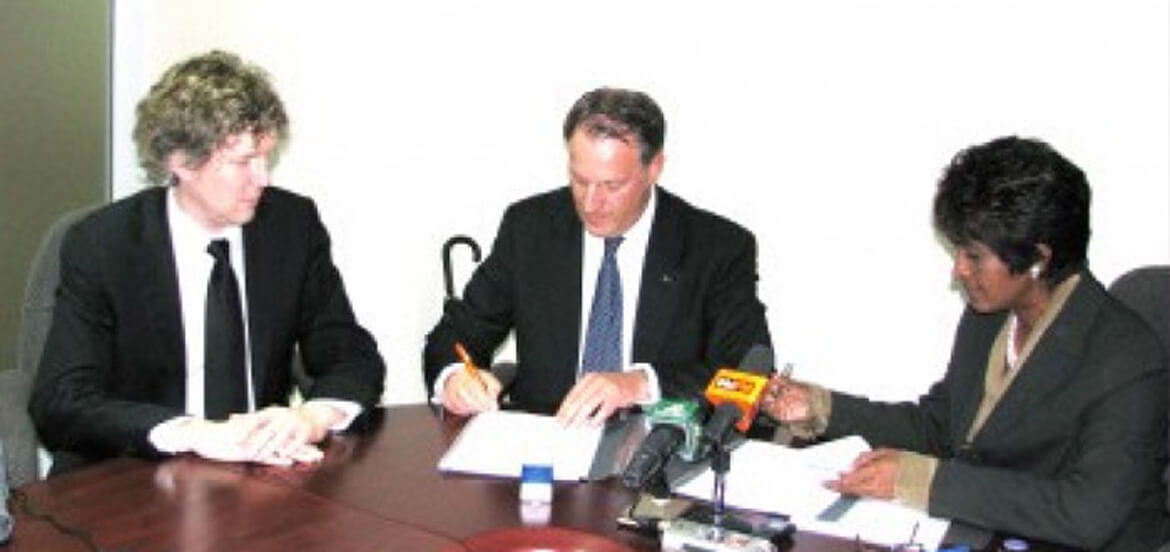
Miadhu News, Abdul Latheef
Creating floating islands will bring much advancement to the country- Paul van de Camp
The CEO Paul van de Camp of Dutch Docklands of the Netherlands has said that the development of artificial floating islands, which will include a convention center and golf courses in Male’ Atoll will bring Maldives much advancements.
Speaking to Miadhu Daily, Paul said that this remarkable venture will not only benefit the investing company but would certainly bring a positive impact to the local economy and add a new assortment to the tourism industry. He also added that having thrilling and fantasy islands will be having a boost on the tourism of the worldly paradise.
Dutch Docklands CEO also said that this megaproject will diversify the Maldivian fame in the outside world apart from the economical benefits.
The Maldivian government last Thursday signed a contract with Dutch Docklands to develop five floating islands which will include a convention center and golf courses.
The government now have leased five shallows of Male’ Atoll for the project for a period of 5o years.
Designed by the world renowned award winning architect Koen Olthuis of Waterstudio.NL, the people who built the Citadel floating apartment complex, the renderings for the amphibious convention center island will appear depict star-shaped, tiered islands with indoor spaces hidden under lush green-roof terraces, complete with interior pools and beaches.
Paul said that he is certain that this environmental friendly artificial convention center island will attract the many international environmental conventions and conferences.
One of the shallows will be incorporated with 280 rooms in the shape of 4 rings while the other shallow will be built with state of the art golf courses which will attract untapped markets from around the globe. Having this enthralling golf course will be icing on the cake for Maldivian tourism, said Paul.
“This project will cost more than 500 million dollars. The government of Maldives will not have to spend a single cent for the investment. We have agreed for the project because we have full certainty that this project will be a huge success. We can market, its certain,” he said.
Paul said that the whole project will be completed in 2015. CEO of Dutch Docklands also said that the government of Maldives will hold a five percent share of Dutch Docklands Maldives Pvt Ltd.
Minister of Tourism Dr. Mariyam Zulfa told Miadhu Daily that this venture by the Dutch Docklands company of the Netherlands will be a visionary accomplishment of the government for the advancement of Maldives and the country’s tourism industry.
CEO Paul highlighted that the Dutch Dockland is a company offering the floating technology with years of experience and this deal would be a good investment to Maldives, especially to diversify the tourism industry.
That’s an idea worth floating: The amazing wildlife haven built on water designed to combat urban pollution

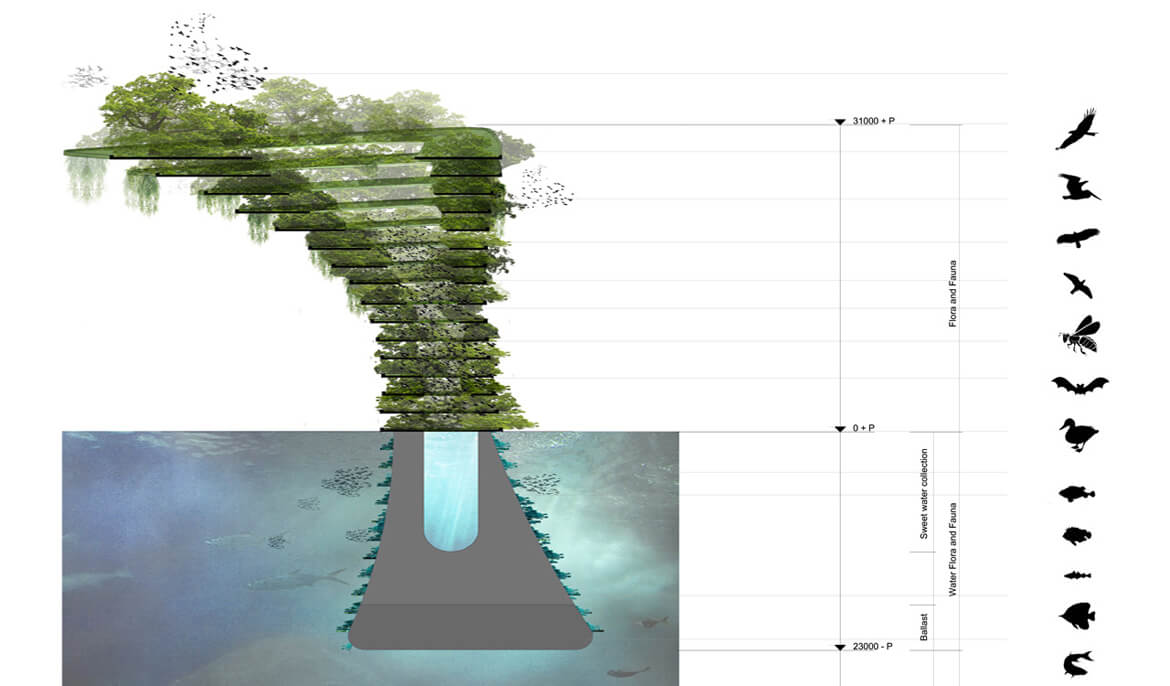
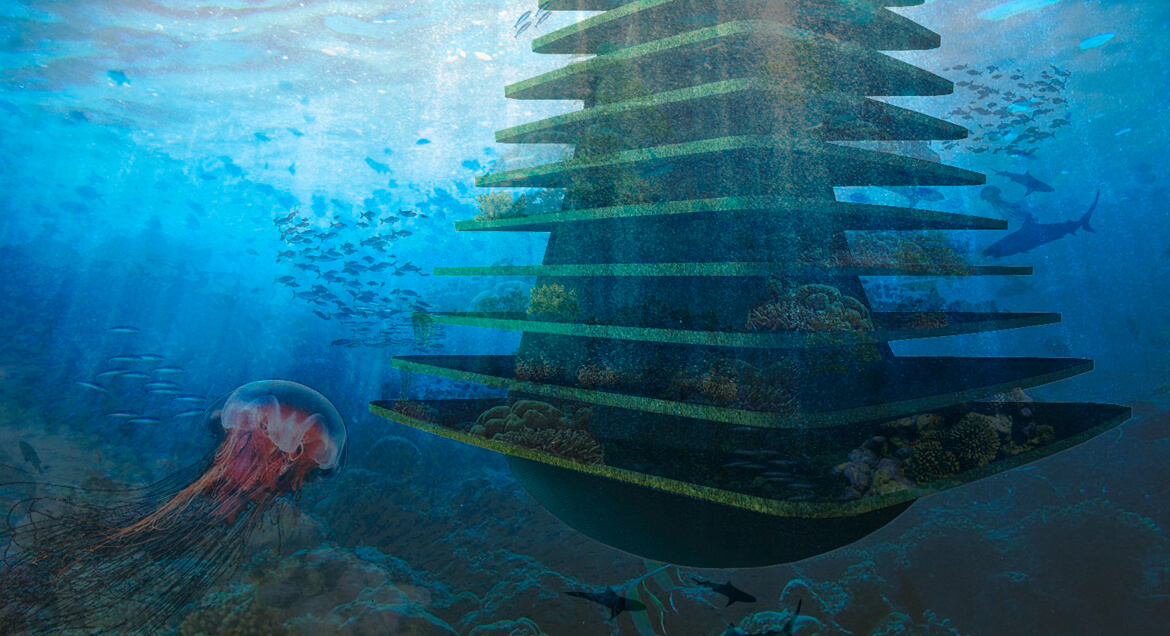
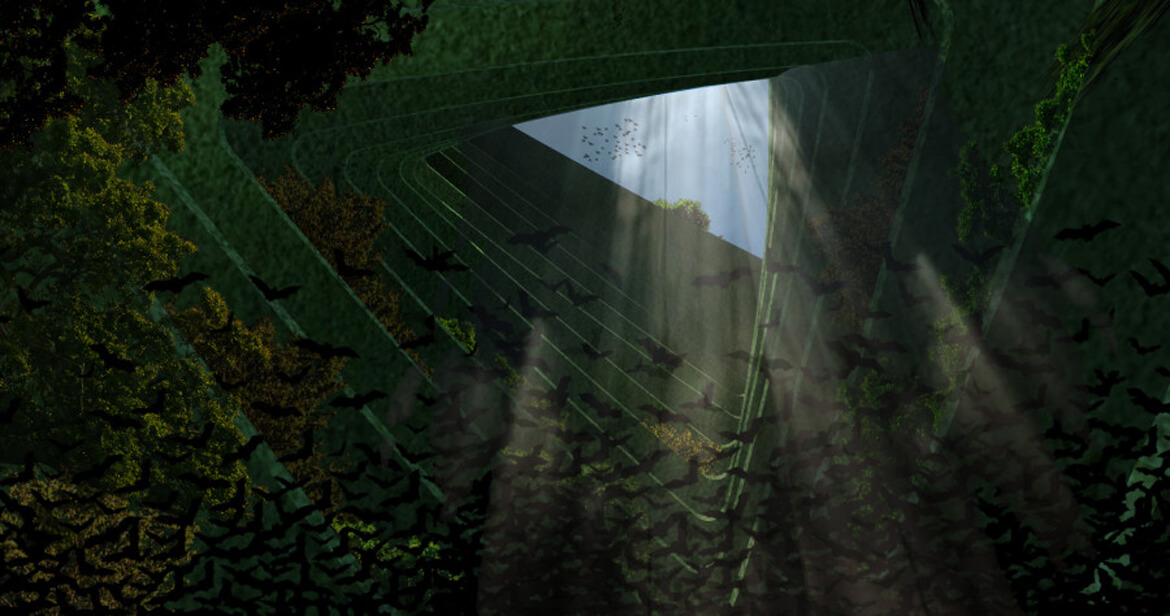
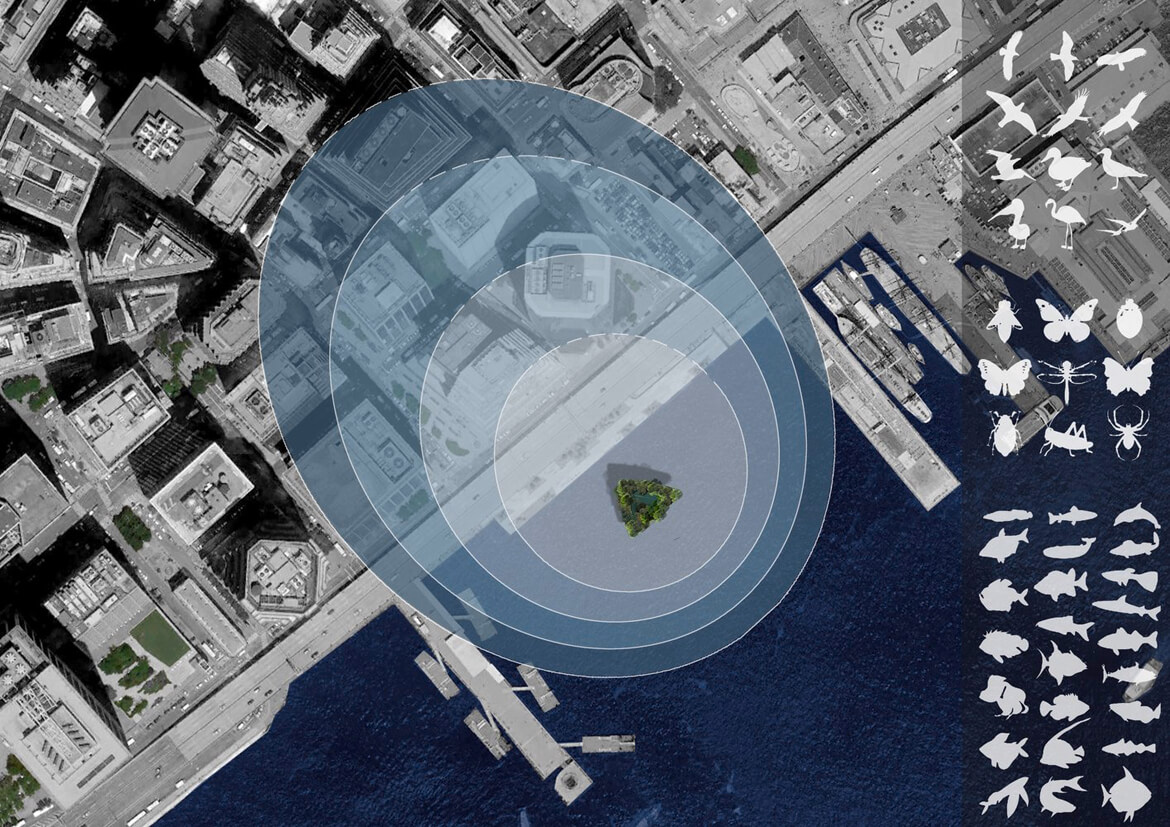
Daily Mail, Graham Smith, Jan 2012
Wide open spaces in cities are becoming an increasingly scarce commodity as the world’s urban population continues to expand.
Now an architect has developed a floating park that is a haven for wildlife and will in turn address the rise in pollution.
Koen Olthuis, of Dutch firm Waterstudio, has unveiled the Sea Tree, a multi-tiered structure comprising of layered green habitats.
The water-based park will provide valuable living areas for birds, bees, bats and other small animals, bringing positive green effects to urban environments.
It will also extend underwater, providing aquatic creatures with an environment to thrive.
Designed for use in cities with large waterways, such as London and New York, the Sea Trek will not be accessible to humans.
Mr Olthuis came up with the concept because it is so difficult to add extra park zones to a city on land. Open space such as rivers, seas, lakes and harbours should instead be utilised, he believes.
He proposes using offshore technology similar to oil rigs to construct the Sea Trees and has even suggested that oil companies donate them to cities to show ‘their concern for a better city environment’.
The giant floating towers would be moored to the seabed with underwater cables; the height and depth of the Sea Tree can be adjusted depending on the location.
Mr Olthuis said: ‘Underwater, the Sea Tree provides a habitat for small water creatures or even, when the climate allows for it, artificial coral reefs.
‘The beauty of the design is that it provides a solution and at the same time does not cost expensive space on land, while the effect of the species living in the sea tree will affect a zone of several miles around the moored location.’
Waterstudio claims the structure will be fully realised within two years and that an undisclosed client has already expressed a keen interest.
Inhabitat interview: Waterstudio’s Koen Olthuis on FLOAT!
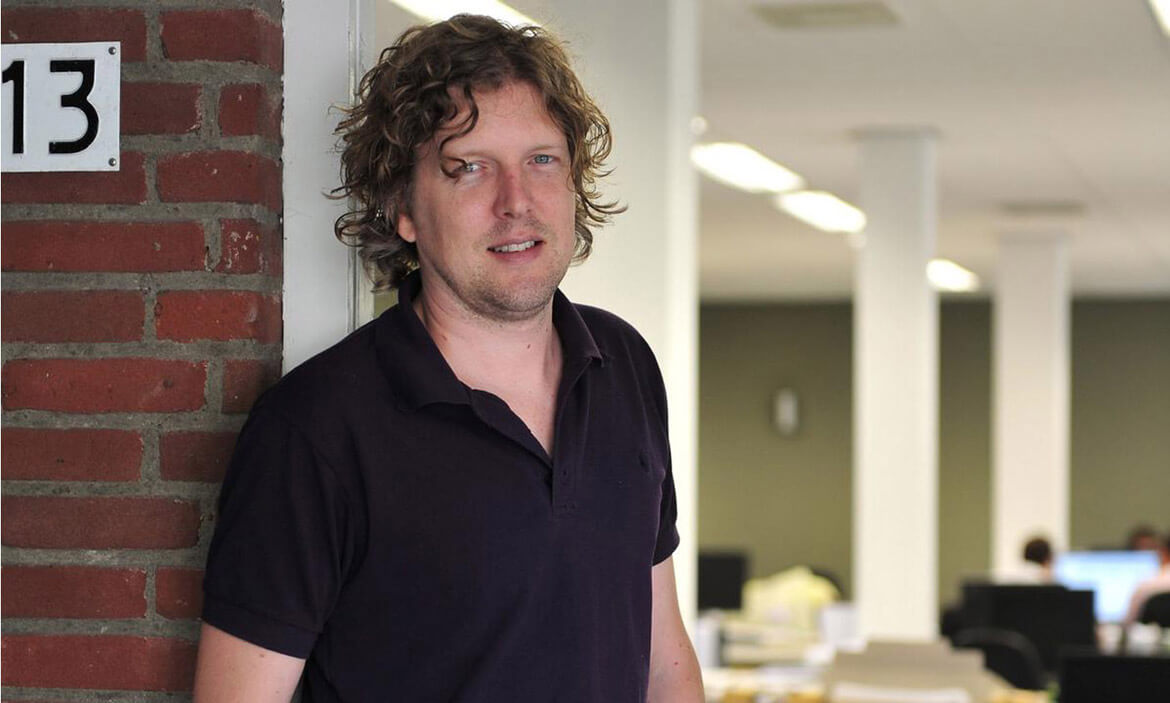
Inhabitat: “World-renowned architect Koen Olthuis is the leading designer of floating structures. Recently, he finished a new book, called FLOAT! read on for our exclusive interview!”
Inhabitat interview: Waterstudio’s Koen Olthuis on FLOAT!
Written by Inhabitat, Bridgette Meinhold
World-renowned architect Koen Olthuis is the leading designer of floating structures — he has built a number of floating houses all over the world and has designed for the likes of Dubai and other metropolises. Koen Olthuis of Waterstudio and David Keuning of Mark Magazine have also authored a book, called FLOAT!, which is a compendium of his knowledge on floating architecture. He details historical projects, discusses the practical uses for floating architecture, explores scenarios for a future world with higher sea levels, and rallies behind sustainability as a necessity for future development on the water. In between his busy travel schedule, Koen was able to take some time to answer a few questions about the future of hydrocities and building on the water – read on for our exclusive interview!
